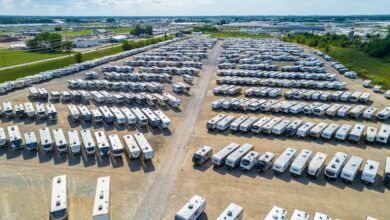What You Can Learn from Your ELR, Part One
Editor’s Note: This is Part One of a two-part column by Don Reed that appeared in the March 2019 issue of RV PRO.
The effective labor rate (ELR) for any service operation is an important metric to track and measure, but I find that many dealers have a misunderstanding of exactly what their ELR really represents and sometimes don’t even track it.
So, let’s begin with the definition of the term effective labor rate: ELR is simply what the customer actually paid for the time charged on the repair order.
The customer can be a retail customer, a warranty customer or an internal customer – it makes no difference. (This rate, of course, can be different for all three labor types.)
Here is the formula for calculating ELR: Labor dollar sales divided by the number of hours billed on the repair order equals the rate actually charged for the repair (ELR).
There is another school of thought that has a different formula: Labor dollar sales divided by the number of hours you paid the technician to complete the work on the repair order.
Either of these two formulas can provide you with the same result when it comes to measuring your profit margin for each hour you sell in the service department.
Many dealers believe their ELR is $125, but in reality there is one key metric that is missing – a technician’s hours produced as a percentage of clock hours actually worked. Let’s call this “technician productivity.”
Here at DealerPRO RV, we work with a lot of RV dealers onsite in their dealerships as well as in our Profit Builders Workshops, and when making this calculation for technician productivity we find it ranges anywhere from 30 to 70 percent, with an average coming in around 50 percent. With that being the case, how does that affect the gross profit and gross profit margins in our example?
- Technicians are being paid for 40 clock hours to produce 20 billable hours (assuming they are not flat rate).
- The cost of sale for every hour billed is $60 versus $30
- 20 hours billed at $125 ELR per hour produces $2,500 in labor sales for the week
- 40 hours paid to technicians at $30 per hour produces a cost of sale of $1,200 for the week.
- The gross profit margin drops to 48 percent versus 76 percent. That’s not a pretty picture!
Accordingly, if you choose to measure ELR by technician hours worked it looks like this:
- 40 hours paid to technicians for sales of $2,500 equals an ELR of $62.50 per tech hour worked.
- $62.50 ELR per tech hour worked with a technician cost of sale at $30 produces a gross profit margin of 48 percent (the same as in the above example).
So, my point is that effective labor rate doesn’t really tell you the whole story until you understand how it is being calculated in whatever reports you may be using. In my mind, the important metric to manage is not the ELR – but the gross profit margin and the corresponding gross profit dollars.
Think of it this way: If you consistently maintain a profit margin of 76 percent regardless of what you’re paying your technicians, you will most likely have a successful and profitable service and parts operation.
With that goal in mind, it’s obvious that a dealer and the management team must put their efforts behind making the changes necessary to move that pitiful 50 percent technician productivity toward 100 percent, meaning you are billing one hour on your repair order for every one hour you are paying your technicians.



